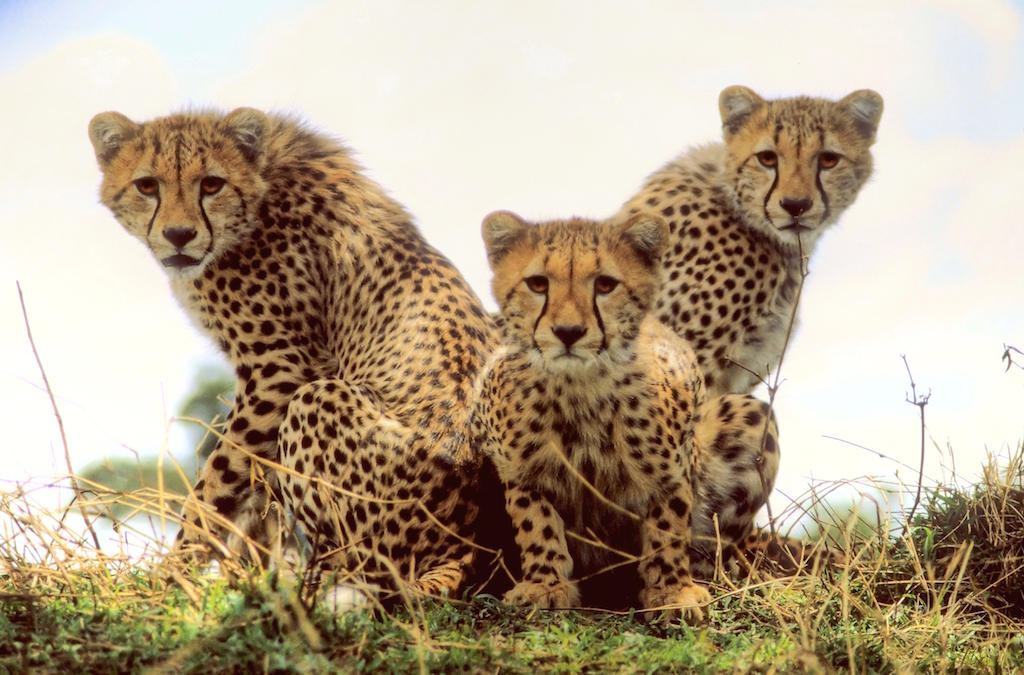Meet the cheetahs of the Masai Mara and Serengeti
The tension in me is rising. My hands adjust the camera lens focused on an acacia tree. I’m waiting. For half an hour the cheetah and her two cubs have been sitting on a termite hill, watching a herd of Thomson gazelles nearby. Suddenly, the cheetah rises with elegant grace. The gazelles are getting nervous.
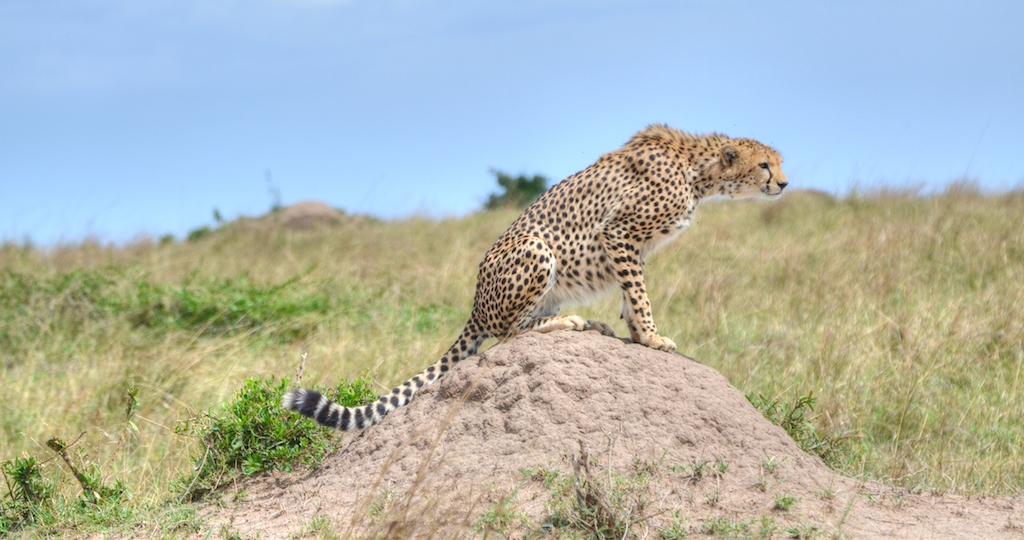
As the gazelles start to run, the cheetah gets ready to sprint.
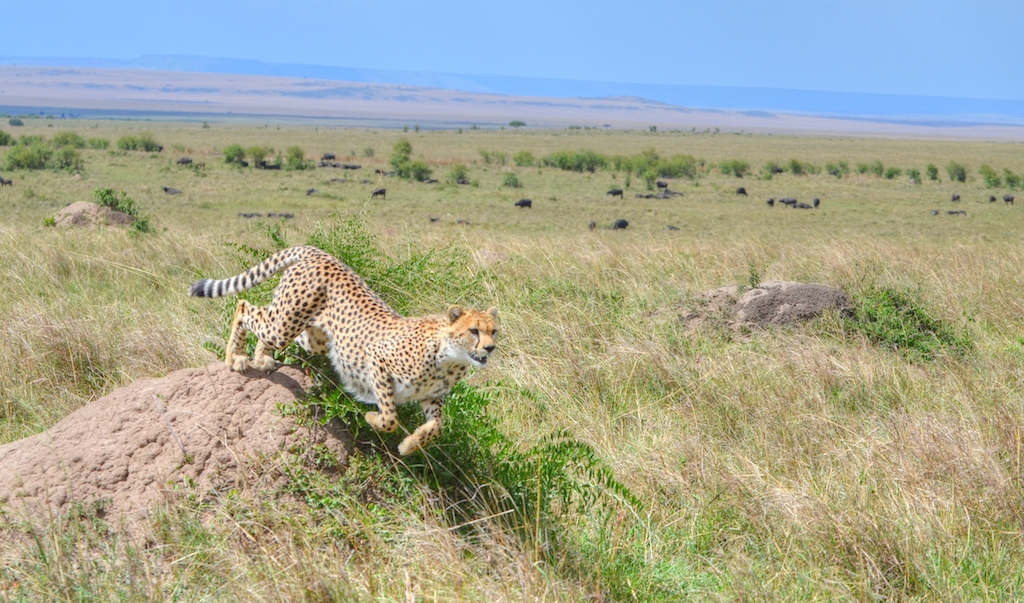
The slim cat is so fast that you can hardly follow her with your eyes. Like a bullet, she races through the high grass.
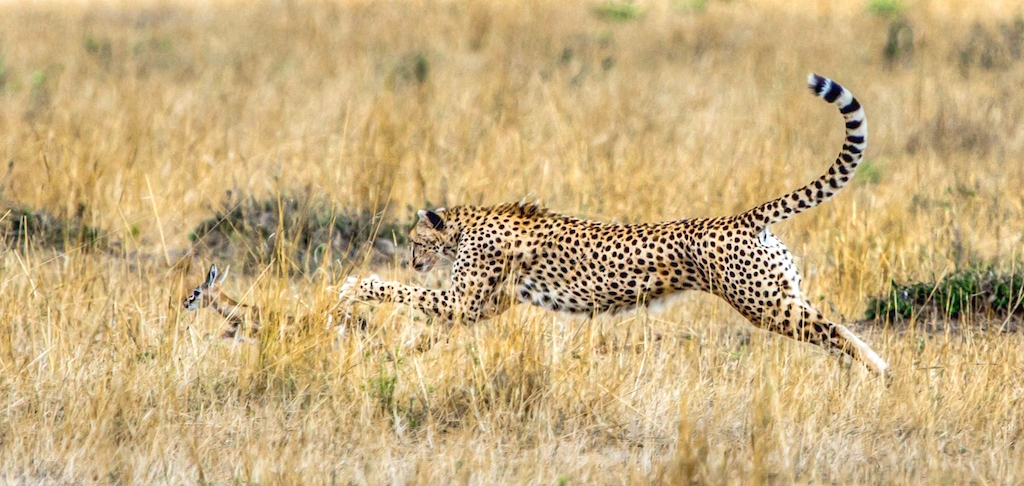
Seconds later the drama is over. The cheetah has torn a young gazelle and drags the warm body over to her cubs. They are hungry and eagerly set out to meet mum half way.
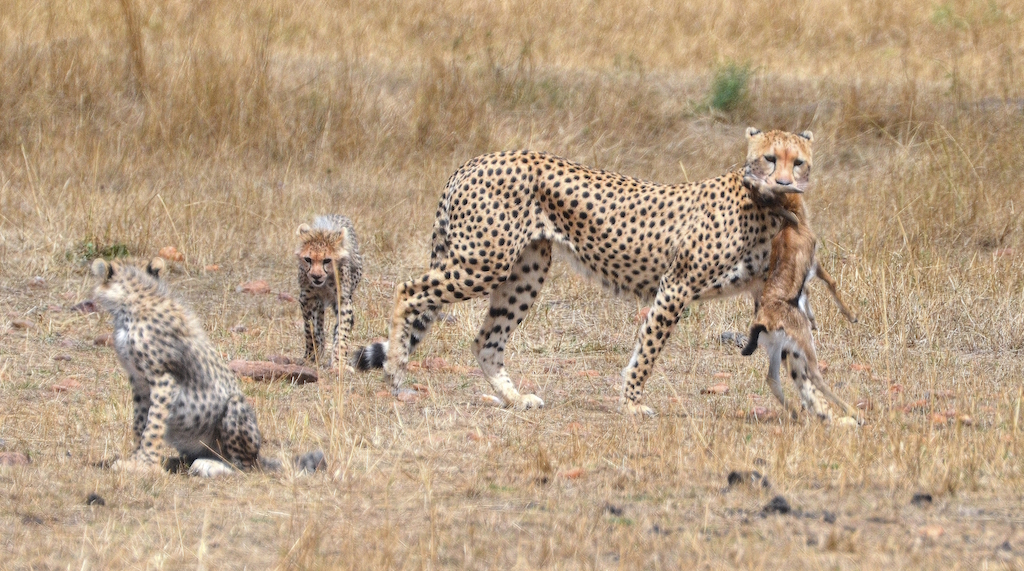
Fascinating predators
The cheetah is one of the most fascinating predators in the Mara-Serengeti ecosystem.
A cheetah, walking across the plains is one of the most beautiful creatures on earth: long-legged and slender, graceful like a model on the catwalk.
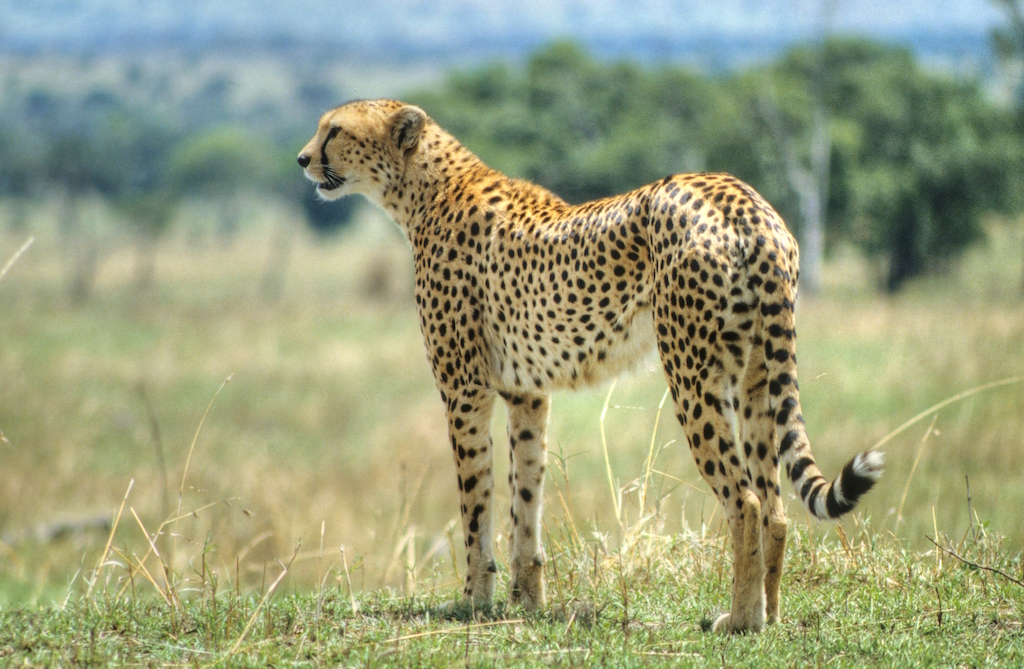
The amber-colored eyes of this cat have always particularly impressed me. More than anything else its their style that make them so impressive: its grace, its physique, its incredible maneuverability and speed, its manner of raising its young, its uniquely patterned coat and its communication. All in all, a particularly impressive beauty.
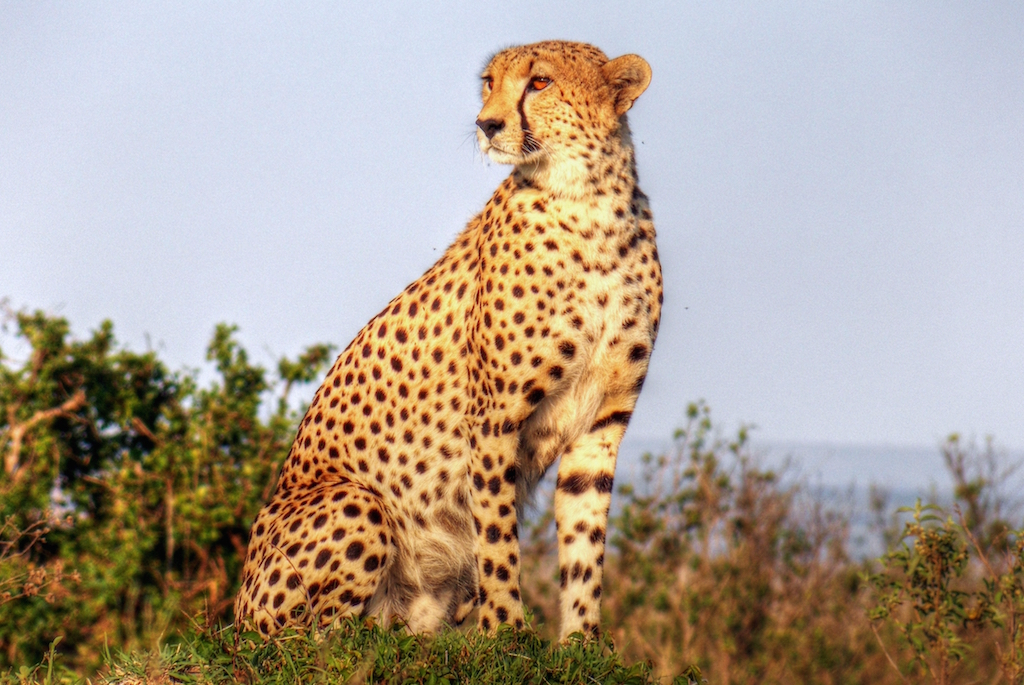
Perfect sprinter
A cheetah is all about acceleration. His extraordinary speed makes him a deadly hunter. The cheetah quickly accelerates with its front legs to reach speeds of more than 100km per hour. Their flexible spine and long legs catapult the big cat forward in jumps of more than seven and a half meters in length.
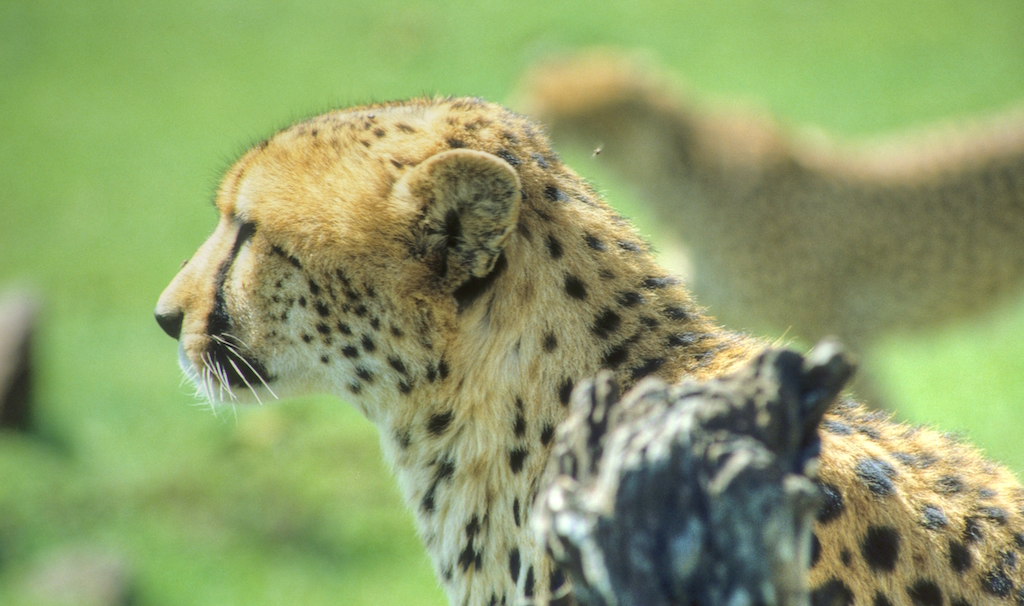
It is inevitable that with this extraordinary body with extraordinary abilities behind it, the cheetah will intercept the path his prey is taking. Anyone who is fortunate enough to witness such a hunt will never forget it.
“Super mamas” save their species
Even for cheetah mothers, it is difficult to raise and protect all their young ones. Many are killed by lions and hyenas or perish in the heat or cold. Sometimes they are abandoned by their mothers if she cannot make hunt enough prey to feed all of them.
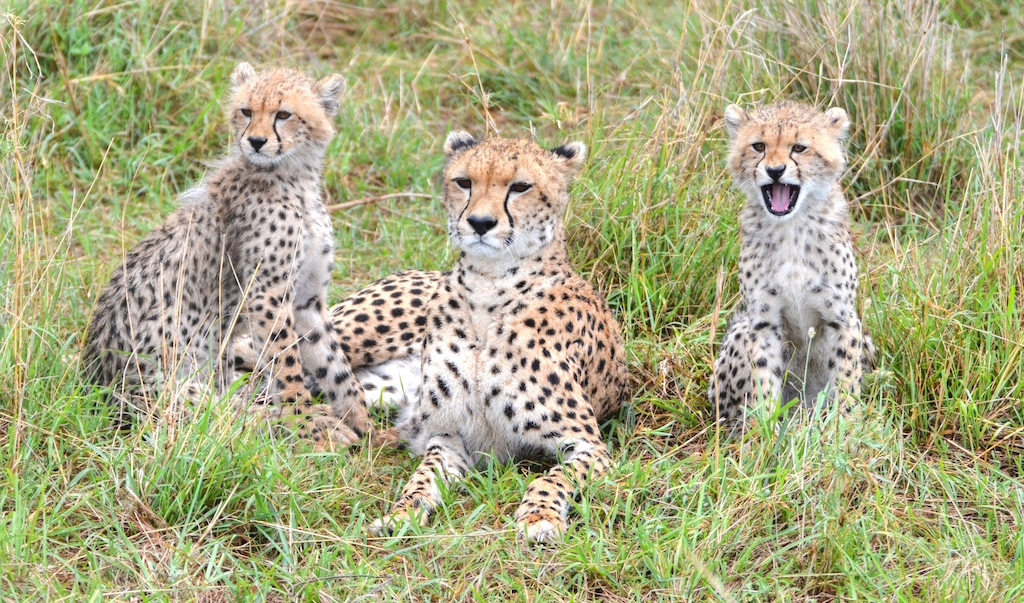
In contrast to this, there are a few females who are able to raise their cubs with astonishing success. These “super mamas” are excellent hunters and kills an animal almost every day. At the same time, they know all of the tricks of the bush. They even manage to hide their little ones from lions and hyenas in the open African grasslands.
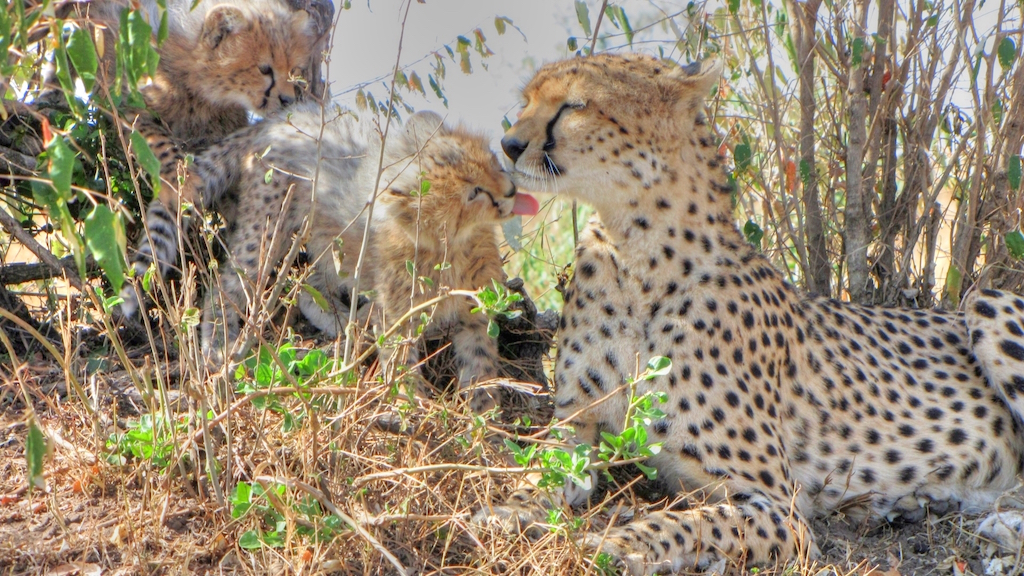
One such “super mama” in the Masai Mara is Malaika, the mother of many cheetahs seen at Bushtops. Malaika is one of the most experienced mums in the Masai Mara.
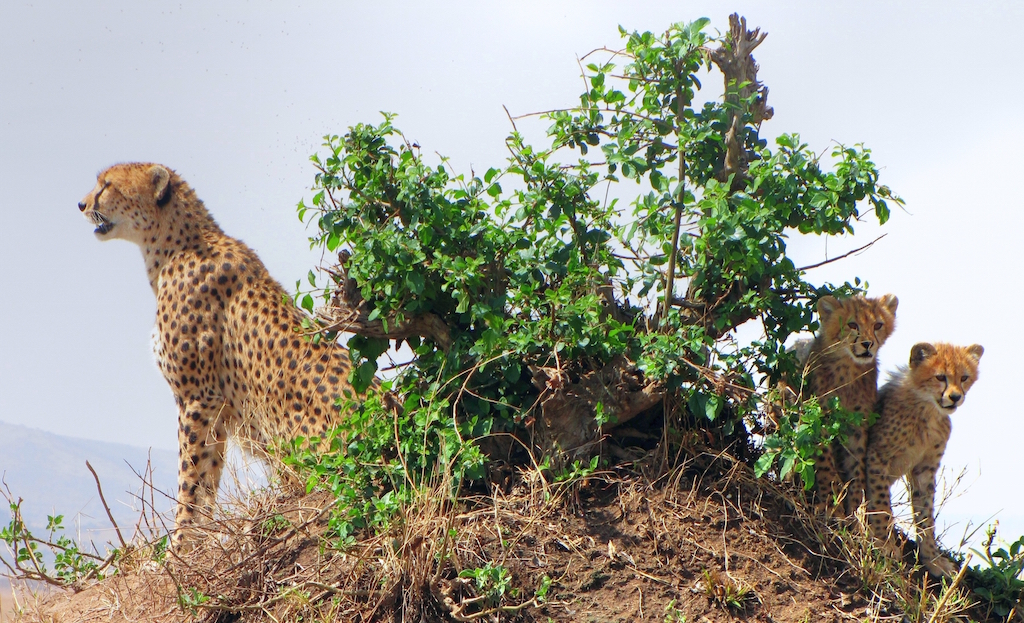
I’ve often had the opportunity to experience these wonderful animals, but I’m always particularly impressed by Malaika – a fast hunter and a caring mother.
The last of their kind
In Africa, cheetah numbers have declined by 90% in the past hundred years alone. Farmers and shepherds have driven out the cats, hunters have shot them off for pleasure and poachers catch the young ones for the lucrative exotic pet trade. Today, barely 10,000 cheetahs survive in the wild.
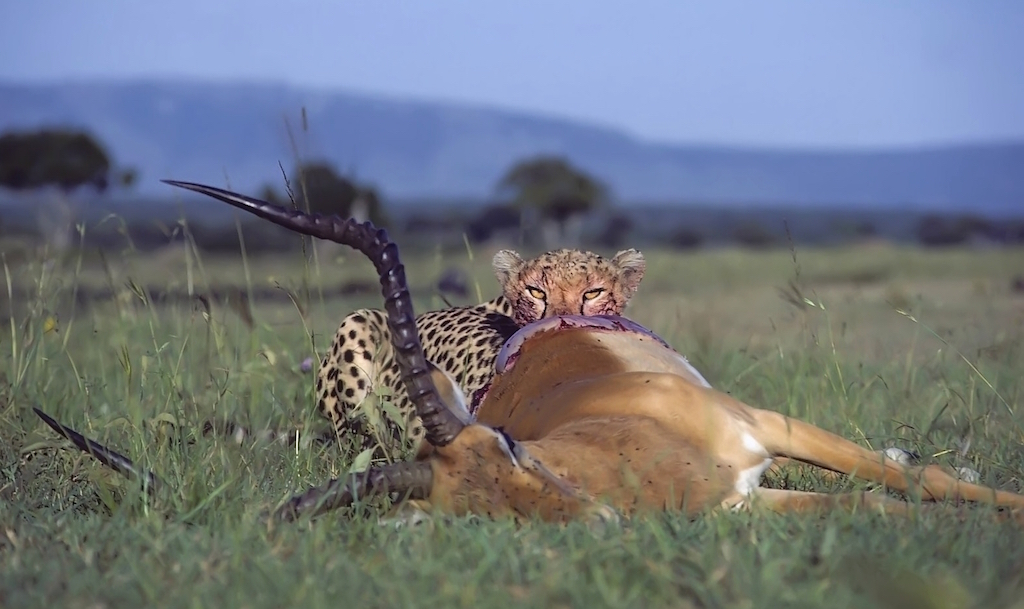
There are more than 3,000 lions and an estimated 1,000 leopards in Serengeti National Park in Tanzania and the neighboring Masai Mara in Kenya, but only 300 cheetahs.
Although cheetahs are the fastest land animals, the species cannot survive on its own:
95% percent of all cheetahs die before they grow up. Hyenas kill them from hunger and lions kill them for sport.
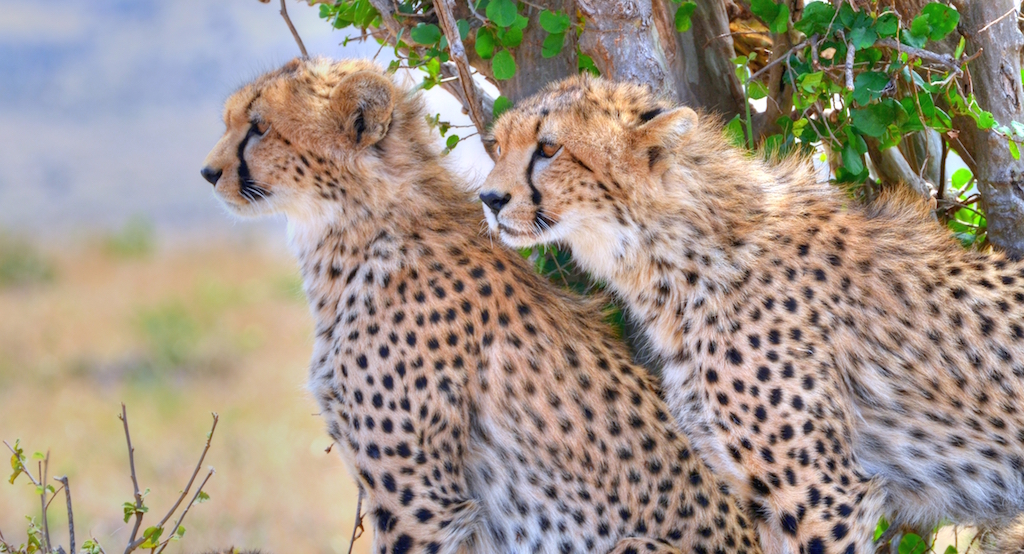
But hope remains that the cheetah will be able to to survive in a free and unspoiled environment.
Anyone who has seen a cheetah is fascinated by its grace, speed and unique appearance – it would be more than a pity if the chance to see them were to disappear.
